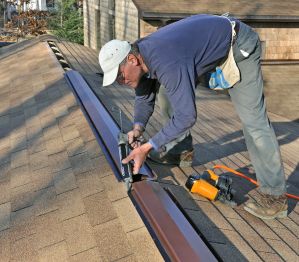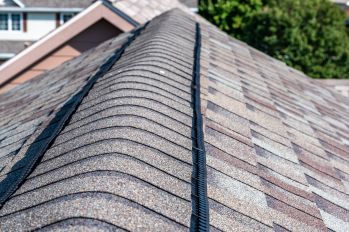What happens if you don’t have a ridge vent?
In hot climates, properly venting your attic from the outside helps to keep the heat out of the attic. If you don’t vent when it’s hot outside, your attic will become hotter.
If you have very hot air in your attics, you can expect that you will also experience hot air in your living spaces. There are more things that hot air in the attic can do to your roof: It can cause your roof to become less durable. Hot, humid air that gets into your attic can cause your roof to last less time by preventing the roofing material from properly drying.
Which is better: ridge vent or roof vent?
Roof vents that are continuously vented along the ridge are most efficient because they are located at the top of the roof, thereby letting warm air flow through the attic. It works best if you have a continuous ridge vent in your attic. It works best if you have a vacuum in your attic.
Air flows from the attic to the attic area and out the ridge into the ridge vent. This is the most efficient way for air to flow, but very few houses have these features. This system of air circulation is smooth and effective. But very few homes still feature horizontal ridge vents on the soffits and are covered by a thick soffit or ridge vent.
How important is a ridge vent on a roof?
It allows air to pass through or exit from your roof system. This will help keep your roof cool, prevent condensation from forming, and help your roof last for a long time.
Roof venting is essentially a set of intake and exhaust vents that work in concert to keep the air in the attic and on the roof cool. It prevents future heat from building up and will keep the roof from becoming very hot and causing water damage. If you continuously let air flow in your attic or roof, it can help you prevent your roof from becoming too hot and causing damage. It helps keep away condensation and water damage, as well as leaks.

Do ridge vents make a difference?
Installing ridge ventilation vents on the roof will help to prolong the life of the roof. Also, a ridge vent on your roof will prolong the life of your roof and will help you control the temperature inside your home. This will help you use less energy. Roof ridge vents are an important part of a roof design, and are important for many reasons.
Having a roof ridge vent in chilly climates can help you save money on cooling bills and save money by allowing hot air to escape from attic space. Roof vents allow for hot air to drain from your attic through the ridges of your roof. Allow air to properly circulate through your house. Some experts believe that there is a wide variety of roof vent types, but ridge vents are the most effective and cost effective.
How many ridge vents do I need on my roof?
For homes with a vapor barrier, homeowners should install one vent per 300 sq. Feet of ceiling space. If you do not have a vapor barrier, it is important to install one vent per 150 sq. Ft. Or 1:150. The rated area of a roof is defined by the area that the roof vent can reach. You need to put equal distances around all the vents that are for intake and exhaust air.
Before you install roof vents, know exactly what they are and what they do. Venting cool air from your attic is as easy as installing a vent on your roof. It is vital that you have enough air vents in your attic and roof to allow cold air to escape. It all depends on how big your house is and how large your attic space is.
Do you need ridge vent and soffit vents?
A properly working ridge fan allows hot air to exit the house by climbing up into the attic. Air flows in from the soffit vent and out of the ridge vent. That means there is no air leaking from the ridge vents, so that means that if there are no soffit vents, a ridge vent won’t work as well. Rooster vents that are not connected to soffit vents will not function properly. They are crucial to preventing problems like mold and mildew.
Soffit vents allow air to flow through the eaves of a house from the bottom up into your attic. They also prevent moisture and heat from accumulating in your attic. Vents that run along the edges of your eaves are called soffit exhaust vents, and they allow cool air to flow into your attic from the outside of your house. Vents at the soffit help keep your attic from becoming too hot and dry, which can cause problems like mold and mildew and wood to rot.
How effective are ridge vents?
In actuality, ridge vents are the most effective and economical roof ventilation system available, even though other roof vents permit some ventilation (which is better than none). Yes, according to our advice. You want to maximize the life of your roof, especially if you are installing a new one.
Any roofing system needs ridge vents as a crucial component. They are installed along the peak of the roof and allow moisture to escape in the winter and warm air to leave the attic in the summer.
Is it better to have a ridge vent or attic fan?
An attic fan is your best option if you could only pick one, and your attic needs ventilation badly. Attic fans in the $300–$400 price range have a maximum CFM capacity of 5,000. A ridge vent might be your best option if you need lower capacity ventilation at a significant cost savings.
Attic fans and roof ridge vents both encourage airflow in attics. Ridge vents are passive ventilation systems rather than mechanical ones like attic fans. Additionally, while attic fans primarily move air outward, from the interior of the attic to the outside, ridge vents move air both in and out of an attic.

